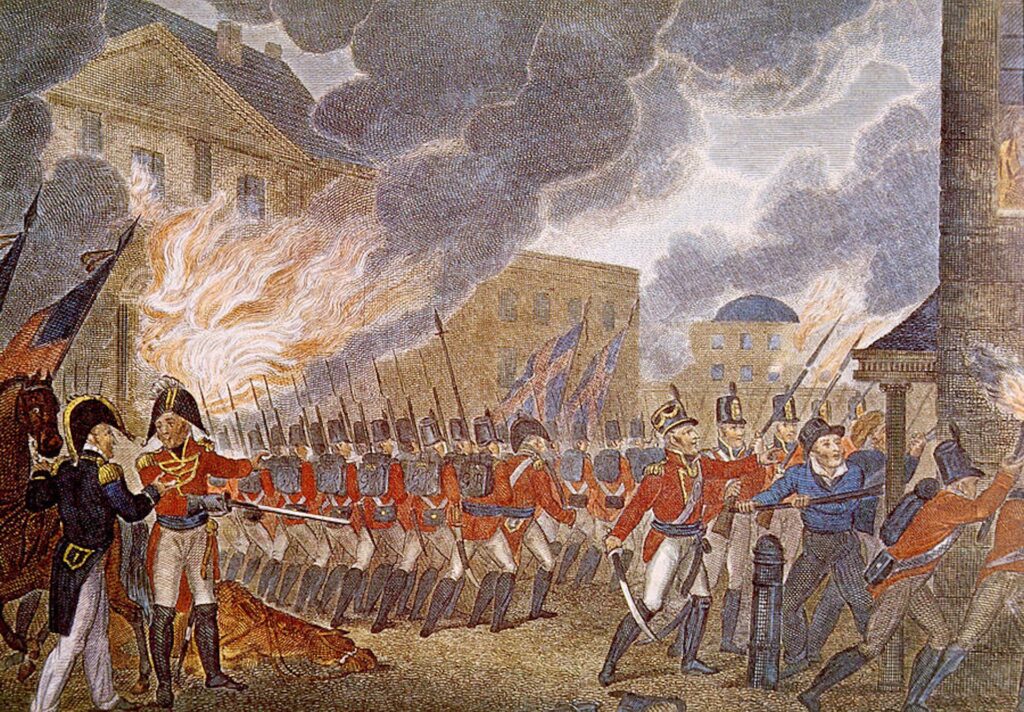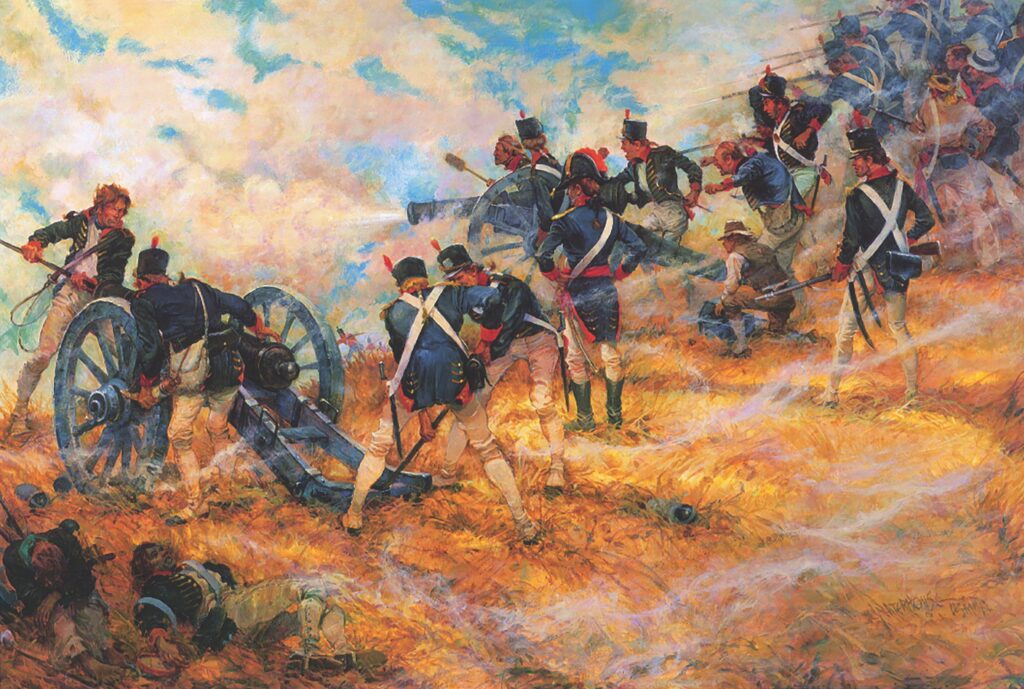During the War of 1812, the young United States was still asserting its independence from Britain despite its earlier military victories in both the Revolution and the Barbary War. In 1813, Americans captured and burned the capital of Upper Canada, the city of York (modern-day Toronto). It was a tactical victory but did little to win the war – and it would cost them in a big way.

The Battle of Bladensburg and Its Significance
The British would finally bring a significant force to bear against the Americans, and a combination of miscalculation and inexperienced command would result in the burning of the nation’s capital. The only silver lining was 500 Marines who kept them at bay long enough for the U.S. government to escape.

For two years, the British Army and Royal Navy were focused on defeating Napoleon in Europe. They didn’t have the resources to dedicate themselves to fully execute a war in North America. They simply didn’t have the manpower or material to avenge defeats like the one at York. In 1814, however, the French Emperor and his Grande Armée were beaten, and Napoleon was sent into exile.
With this new influx of hardened veterans fresh from defeating Napoleonic France, the British decided to use them to finally implement an over strategy against the Americans. They wanted to control New England in the north while capturing New Orleans to split the Americans in two.
The Battle of Bladensburg: Marine Heroism
Their next move would be to raid the U.S. Atlantic coast, sapping citizen morale for the war. Knowing British ships were on the way, American war planners believed their target would be Baltimore, a commercial center that seemed ripe for plunder. While Washington, D.C. might have been the capital, attacking it would give the invaders little strategic advantage.
The British would attack both cities eventually, but a joint force of soldiers, sailors, and Marines would make a stand at Bladensburg, Maryland, in the battle of Bladensburg to try and prevent the British from capturing Washington.

The Royal Navy approached the U.S. with four ships of the line, twenty frigates and sloops of war, and twenty transports with the goal of first destroying the U.S. Chesapeake Bay Flotilla. Under Commodore Joshua Barney’s command, the flotilla destroyed its own gunboats and marched to Bladensburg, the key to defending Baltimore and (especially) Washington.
Brig. Gen. William Winder was in command at Bladensburg, and defending the capital was his first goal. He had 6,500 men at his command, but most were not professional soldiers; they were mostly militiamen going up against the 4.500 Redcoats who just defeated Napoleon’s Imperial Guard.
The Marines’ Valiant Stand and Legacy
He organized his forces in three lines to block the road to Washington, with Barney’s sailors and Marines in the third line. In their haste to cross the Anacostia, they left the bridge crossing intact. Moreover, the lines of infantry were spaced too far apart to support each other.
The British crossed the bridge and attacked just after noon on August 24, 1814. President James Madison was on the battlefield and was still there when the British assault began. Despite not fully being prepared, he attacked the Americans right away. His light brigades hadn’t even arrived yet.
Their assault went off like clockwork. In the face of heavy rifle and artillery fire, they put enormous pressure on the Americans. U.S. skirmishers and artillery crews started to fall back in the face of the assault. The left flank of the line became enveloped and broke, causing the American militia to flee. Meanwhile, the U.S. government was hurriedly packing its things to do the same.

British reinforcements began to arrive, and although the Americans stopped to regroup and fight again, the sight of more and more Redcoats was overwhelming. Winder ordered a retreat, but Commodore Barney didn’t get that order. His sailors and Marines had their own guns and were on the high ground, so British troops assaulted their position.
The Marines didn’t break; they charged the British charge and fired grapeshot into the attackers. Not only did they hold their ground, but they also pushed the Redcoat tide back. Had there not been another brigade of reinforcements, the Marines might have won the day.
Their spirited two-hour stand at Bladensburg bought the government time to evacuate the capital before the British arrived and burned most of the government buildings.
It’s said that because of the Marines’ outnumbered fight against a veteran enemy, the Marine Corps Commandants’ Home and Marine Barracks Washington at 8th & I were spared from the torch when the British burned Washington.
Read About Other Battlefield Chronicles
If you enjoyed learning about the Battle of Bladensburg, we invite you to read about other battlefield chronicles on our blog. You will also find military book reviews, veterans’ service reflections, famous military units and more on the TogetherWeServed.com blog. If you are a veteran, find your military buddies, view historic boot camp photos, build a printable military service plaque, and more on TogetherWeServed.com today.

So glad to see recognition of the role of Joshua Barney and the sailors and marines of the Chesapeake Flotilla at Bladensburg. Their contributions to the action are often overlooked in the midst of critical comments about the “Bladensburg Races”.
Few people know about the Chesapeake Flotilla and their actions in the Patuxent River that stalled the British advance on Washington from June until late August before they joined the defenders at Bladensburg. Afterward, about 500 of Barney’s men marched to Baltimore and helped man the batteries defending Ft. McHenry.